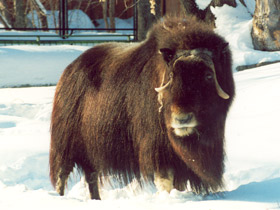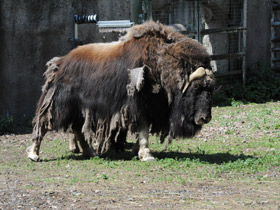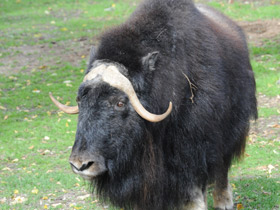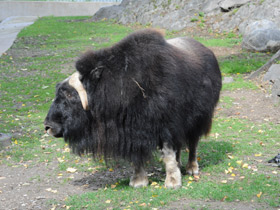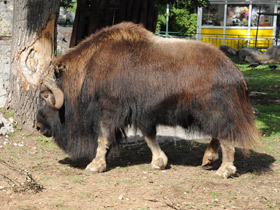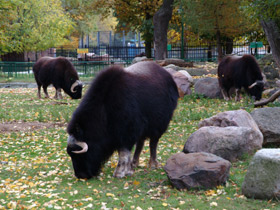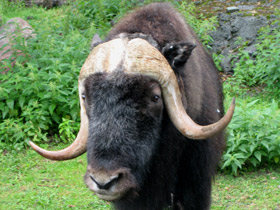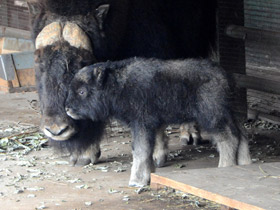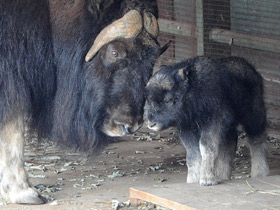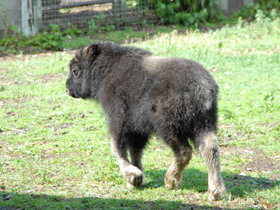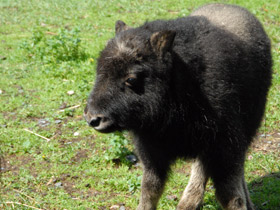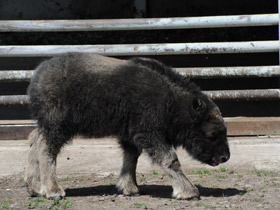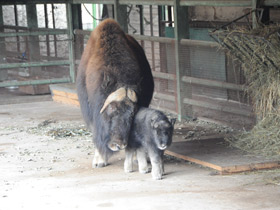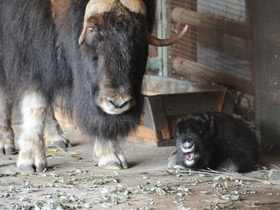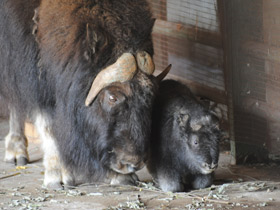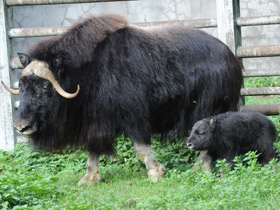The muskox Ovibos moschatus
Taxonomic status of the muskox is still debated since this animal combines characteristics of different subfamilies (that is why it was earlier related to the Bovids, but later had been referred to the Caprinae). The muskox occurs in the tundra of continental Canada, Greenland, and Canadian Arctic Archipelago. During the long evolutionary process the muskox developed many adaptations to harsh arctic conditions, which are reflected in the morphology, physiology and biology of this animal. The muskox is the only representative of the ruminants who can live in Arctic and feed on scarce vegetation. The muskox is a fairly large animal: its body length is about 230 cm, shoulder height, 135 cm and weight, 300 kg (the largest wild male weighed 408.2 kilograms). It has a stocky, barrel-shaped body, heavy head, thick neck, short legs, and a shoulder hump. Small tail and pointed ears are almost fully hidden in the long hair hanging on the sides of the body, belly, and chest like a fringe, and providing a warm layer when the animal rests on the snow. The length of the muskox’s hair reaches 9 cm. But even more important role in keeping the muskox warm belongs to its undercoat of soft, fine hair growing beneath the longer outer wool. This undercoat, also known as qiviut, comprises 60-80% of the whole muskox’s wool and reaches the length of 5-7 cm. The rounded hooves of the muskoxen are quite large and have sharp lower edges; the hooves help the animals move on the hard, slippery ice crust, and smoothly climb steep rocky slopes. The front hooves are somewhat larger than the rear ones; in winter the animals use their front hooves for digging in the snow, while they graze for food which is sometimes found in 40 or even 50 cm under the surface. The males have very thick heavy horns that curve down besides its face and out at the ends. Horns can reach the length of 75 cm in males and 40 cm in females.
Prior to the mating season, dominant males establish harem herd comprising 7-8 to 25-30 individuals and consisting of females and their young of different ages. During the rutting season, bulls confront each other by butting heads, which resembles the behaviour of the rams. This period also features the strong odour of musk released by bulls, which is reflected in their common name. Gestation lasts 8 to 9 months and the female typically gives birth to a single calf, with twins being born very rarely. The newborn weighs 7 to 8 kg and is able to follow its mother in 2 to 3 hours after birth. In the first days, the calves consume a lot of mother’s milk and the females nurse them very often (18 to 20 times a day). The calves start grazing at the age of one week. They grow very fast and redouble their weight in 32-35 days. They are weaned by three to four months of age and become fully independent by the age of one age

















